- At least 95 civilians – nearly half of them children – killed in four unlawful strikes in Rafah
- Attacks took place in southern governorate supposed to be “safe”
- All four strikes are likely direct attacks on civilians and civilian objects and must be investigated as war crimes
Fresh evidence of deadly unlawful attacks in the occupied Gaza Strip, gathered by Amnesty International, demonstrates how Israeli forces continue to flout international humanitarian law, obliterating entire families with total impunity.
The organization carried out an investigation into four Israeli strikes, three in December 2023, after the humanitarian pause ended, and one in January 2024, that killed at least 95 civilians, including 42 children, in Rafah, Gaza’s southernmost governorate at a time when it was supposedly the “safest” area in the strip, but where Israeli forces are currently gearing up for a ground operation. Such an operation will likely have devastating consequences for more than a million people who are crammed within an area of 63 km2 following successive waves of mass displacement.
In all four attacks, the organization did not find any indication that the residential buildings hit could be considered legitimate military objectives or that people in the buildings were military targets, raising concerns that these strikes were direct attacks on civilians and civilian objects and must therefore be investigated as war crimes.
Even if Israeli forces had intended to target legitimate military objectives in the vicinity, these attacks evidently failed to distinguish between military objectives and civilian objects and would therefore be indiscriminate. Indiscriminate attacks that kill and injure civilians are war crimes. The evidence collected by Amnesty International also indicates the Israeli military failed to provide effective, or indeed any, warning – at minimum to anyone living in the locations that were hit – before launching the attacks.
“Entire families were wiped out in Israeli attacks even after they sought refuge in areas promoted as safe and with no prior warning from Israeli authorities. These attacks illustrate an ongoing pattern of Israeli forces brazenly flouting international law, contradicting claims by Israeli authorities that their forces are taking heightened precautions to minimize harm to civilians,” said Erika Guevara-Rosas, Amnesty International’s Senior Director of Research, Advocacy, Policy and Campaigns.
Three of the attacks were carried out at night when civilian residents, including families displaced from other areas, were likely to be, and were, inside their homes in bed.
“Among those killed in these unlawful attacks were a baby girl who had not yet turned three weeks, a prominent 69-year-old retired physician, a journalist who welcomed displaced families into his house and a mother sharing a bed with her 23-year-old daughter. The testimonies that grieving survivors shared should serve as a reminder that these atrocity crimes in Gaza are a stain on the collective conscience of the world,” said Erika Guevara-Rosas.
“Following the International Court of Justice’s key interim ruling that the risk of genocide is real and imminent, the horrific details of these cases reinforce the urgency for all states to push for an immediate and sustained ceasefire, which is the most effective way to implement the provisional measures ordered by the court. They also underscore the importance of imposing a comprehensive arms embargo on all parties to the conflict.”
Amnesty International visited the sites of all four attacks, captured photographs and videos of the destruction and interviewed a total of 18 people, including 14 survivors and four relatives who took part in rescue operations. The organization’s Crisis Evidence Lab analysed satellite imagery, photos and videos to geolocate and verify the attacks and resulting destruction.
The organization also reviewed the war diary published by the Israeli military’s official page and found no reference to any of the four strikes. Amnesty International sent questions regarding the strikes to Israeli authorities on 19 and 30 January 2024. At the time of publication, no response had been received.
‘My children’s small bodies were torn to pieces’: The Harb family strike in Al-Zuhour, Rafah
On 12 December 2023 at 3.02am, an Israeli strike directly hit two houses belonging to the Harb family in Al-Zuhour neighbourhood in Rafah, killing 25 civilians, including 10 children, nine men and six women, one of whom was eight months pregnant. At least 17 others were wounded. The strike completely destroyed the two houses and severely damaged three adjacent homes where some of the fatalities occurred.
The testimonies that grieving survivors shared should serve as a reminder that these atrocity crimes in Gaza are a stain on the collective conscience of the world.
Erika Guevara-Rosas, Amnesty International
Islam Harb, 30, who lost three of his four children in the attack – five-year-old twin daughters, Jude and Maria, and six-month-old son, Ammar – described to Amnesty International the terrifying moment the strike hit:
“I heard a huge blast. I don’t remember seeing anything, I just heard a very loud blast and lost consciousness. I woke up in hospital; the first thing I remember is asking about my children. Only Leen, the four-year-old, survived; my family spent days trying to dig the remains of the dead out of the rubble. The body of my [25-year-old] brother Khalil was found 200m away from the house due to the power of the strike, in pieces. My children’s small bodies were torn to pieces.”
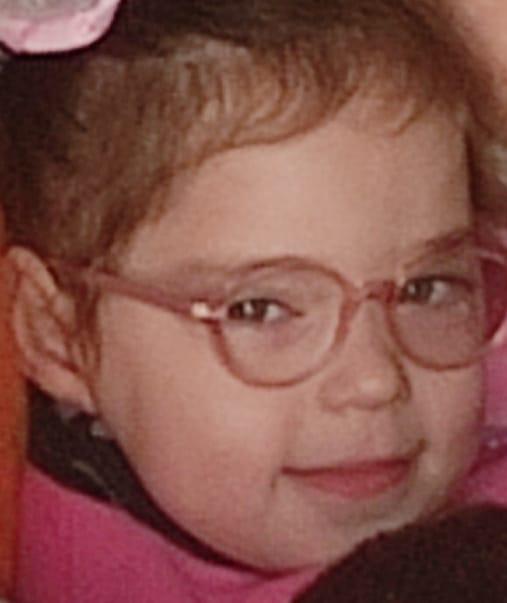
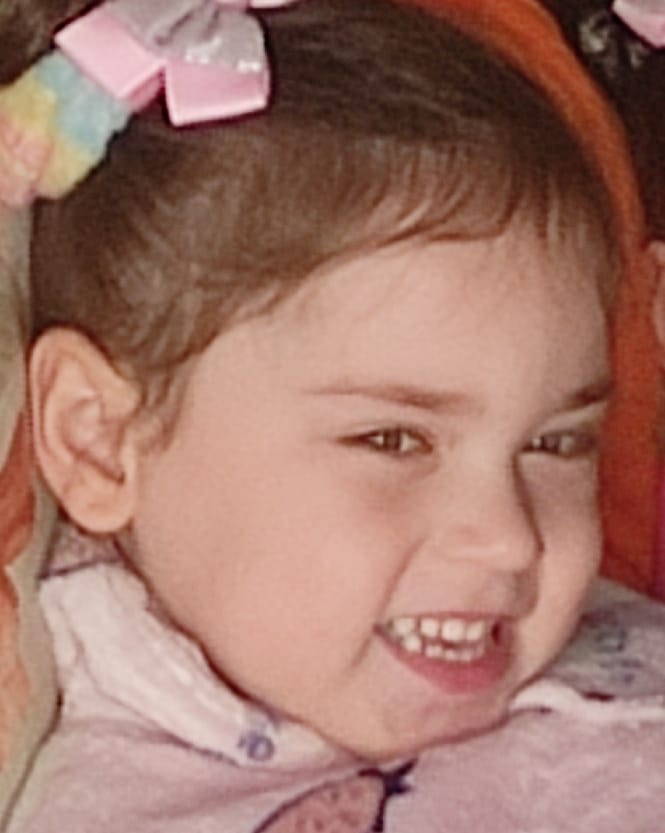
Islam told Amnesty International that his family members have no idea why their houses were hit and that they received no advance warning of the strike. His mother, Inaam, 52; sisters, Abir, 23, and Najwa, 26; and brothers Mohammed Al-Hadi, 22, and Zein Al-Abidine, 15, were among those killed in the attack.
Islam said the family was hosting displaced relatives who were forced to leave Gaza city at the order of the Israeli military. He said they were close relatives whose backgrounds they knew well and who had no political affiliation.
A surviving sister, Ahlam Harb, 34, whose finger had to be amputated as a result of the strike, told Amnesty International:
“It’s a miracle I’m alive and talking to you. I’m in constant pain, especially in my lungs, still struggling to breathe… I lost my mother. My sister Najwa, her husband, and all of their children were killed. Abir, my closest sister, the dearest person to me, was also killed. Her loss broke my back. My brother Mohammed Al-Hadi was only recognized by his hair; nothing was left of my brother Khalil except his hand… My children were rescued from beneath the rubble alive. I look at them and cannot believe they are still alive.”
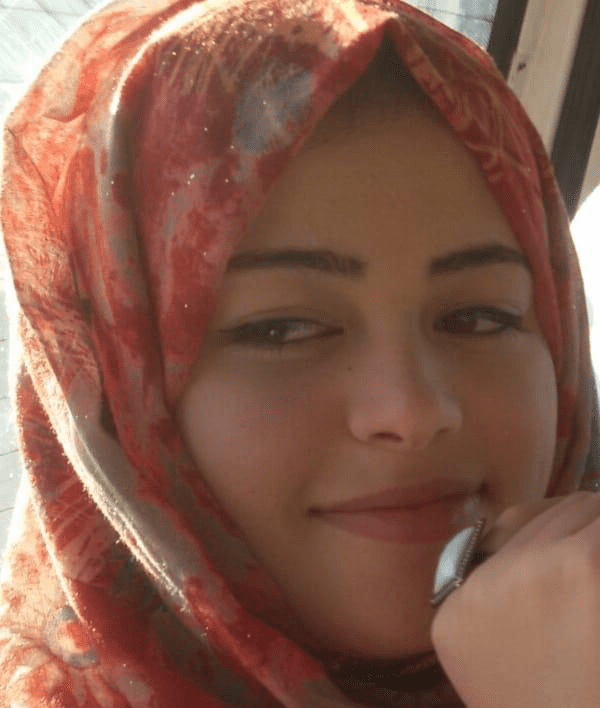
Abir had previously been interviewed by Amnesty International after her fiancé and his mother were killed in an Israeli air strike during a three-day offensive in Gaza in August 2022.
Witness testimony and photographic evidence collected from the scene indicate the houses were struck more than once, resulting in at least two craters. Israel has offered no explanation for the incident.
Amnesty International visited the site of the strike on two occasions and reviewed the list of those killed and wounded in the attack. The organization did not find any evidence that there were any military objectives in the area or that any of those present in the buildings at the time of the attack were legitimate military targets, raising serious concerns that the strike on the Harb family homes was a direct attack on civilians and civilian objects, which must be investigated as a war crime.
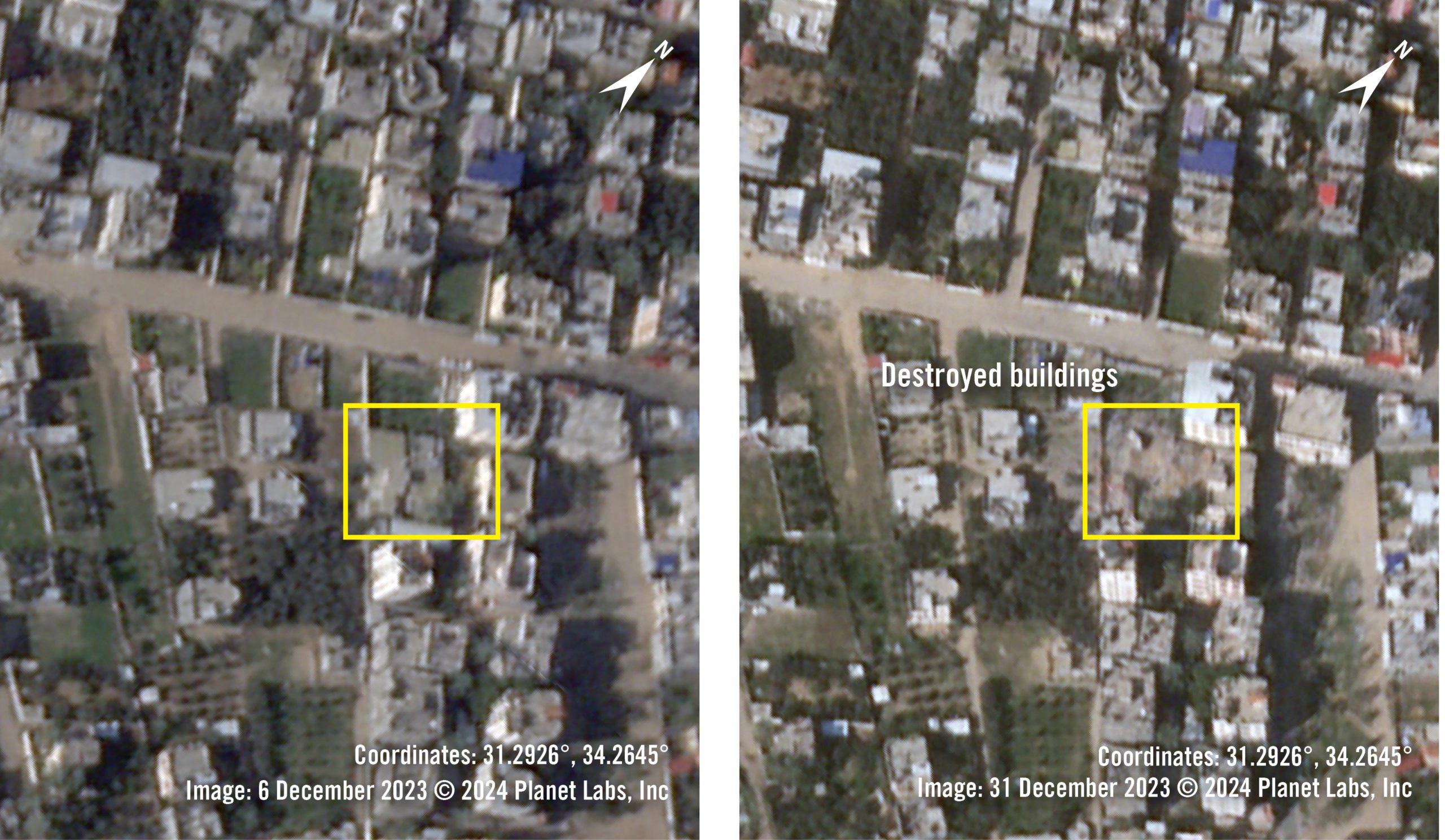
‘We went to Rafah looking for safety’: The Shehada family strike in the Brazil neighbourhood of Rafah
On 14 December at around 11.45am, an Israeli strike hit and completely destroyed a three-storey house in the Brazil neighbourhood of Rafah belonging to Abdallah Shehada. The 69-year-old retired surgeon and former director of Abu Yousef Al-Najjar Hospital was killed alongside at least 29 other civilians, including 11 children, seven men and 11 women. At least 10 others were wounded.
The oldest victim of the attack was Hamdi Abu Daff, a displaced 86-year-old man, and the youngest was Ayla Nasman, aged three months.
Abdallah Shehada’s son, Yousef, a 36-year-old surgeon at the European Hospital in Khan Younis, who also lost his brother Yahia, a 29-year-old IT student, said he left the house an hour before the strike.
“This was the house of a doctor who devoted his life to helping people, a house where displaced people were seeking refuge… We spent days trying to dig the bodies out of the rubble, people who just wanted to be safe,” he said. “We know all those who were staying in the building.”
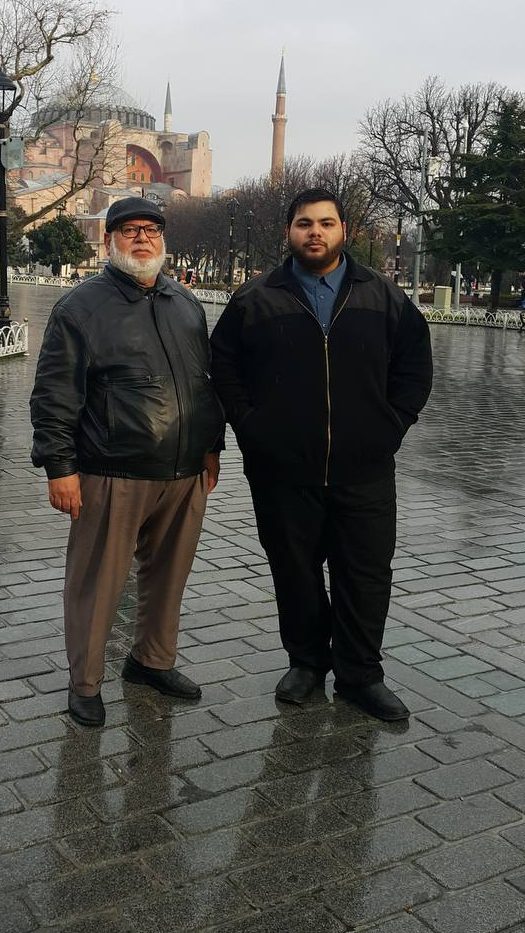
At least two of the displaced people staying in the building had work permits in Israel, meaning they had undergone rigorous screening by Israeli authorities.
Ahmad Nasman, 30, a physiotherapist, lost his wife Oula, 29, also a physiotherapist, and their three children: Arwa, 5; Karam, 4; and Ayla, three months. His parents, Hassan, 63, and Omaya, 58, were also killed, as was his sister Aya, 28.
He told Amnesty International that a month after his parents had moved to Abdallah Shehada’s home, he followed suit alongside his wife and children in mid-November. They made the gruelling journey from Gaza city to Rafah in a horse-drawn cart through the so-called “safe corridor” which he described as a “corridor of hell”. The ordeal terrified his children, who witnessed Israeli soldiers conducting strip searches.
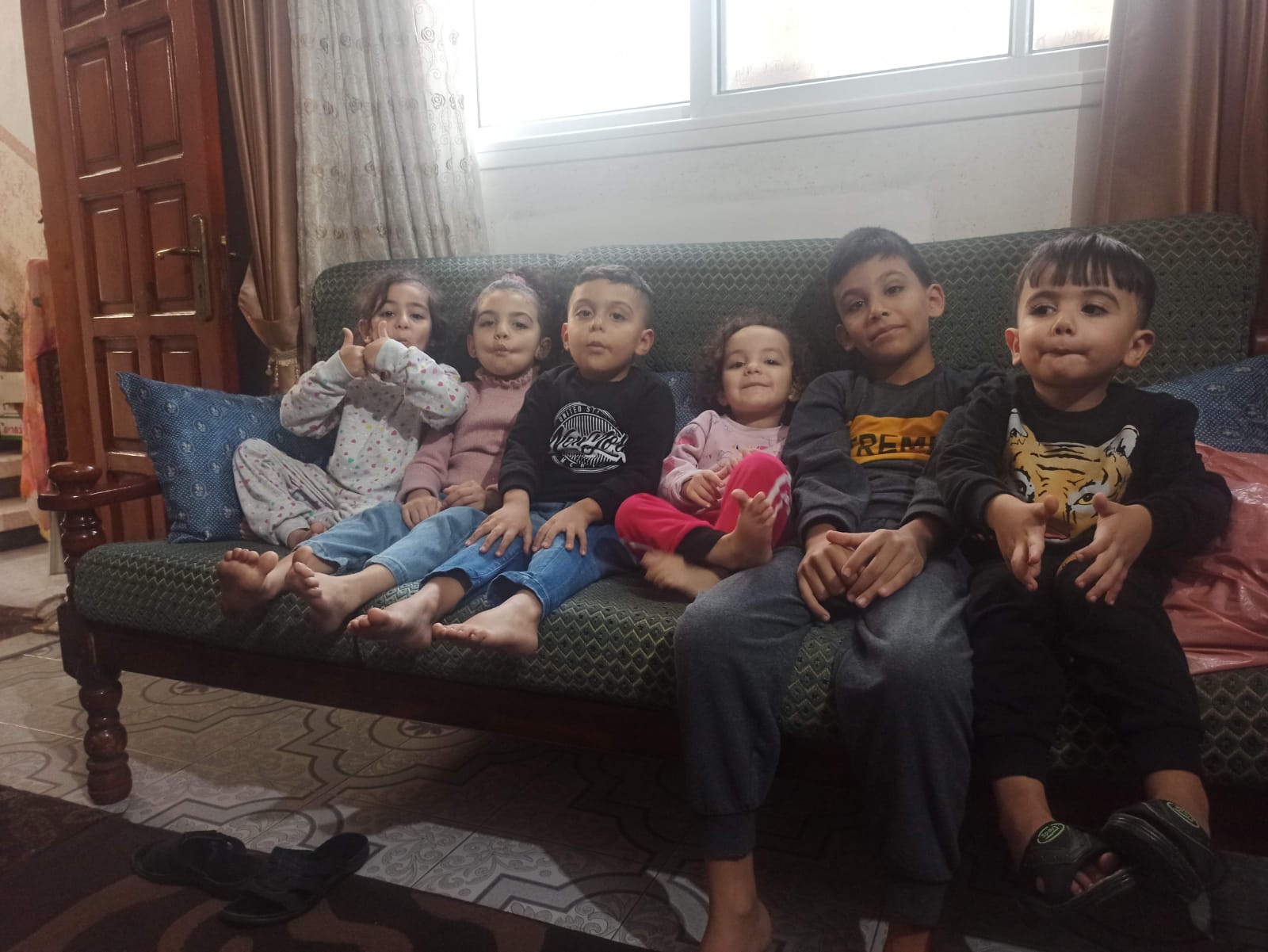
On the day of the strike, he was at a nearby market and rushed home after hearing the explosion to find the house on fire. “Everything was completely destroyed… nothing but ruins, smoke and stones,” he said.
It took him four days to retrieve the body of his baby daughter Ayla from the rubble; she was only recognizable by her clothes. The blast decapitated his five-year-old daughter, Arwa. “When the war started, I had only one mission in my life, to protect my children. I wish I were with them when the house was hit,” he said. “My body survived but my spirit died with my children, it was crushed under the rubble with them.”
One survivor, who spoke on condition of anonymity, described the experience of spending nearly eight hours trapped beneath the rubble with a broken leg, only able to move one arm. His wife and young son were killed in the attack. He told Amnesty International that he was standing by the front door after going outside to bake bread on firewood when suddenly he was flung in the air, hit a wall and lost consciousness:
“I started screaming, shouting for people to help me, I was under the rubble… in something like a very, very narrow cellar… I could see that there were people trying to rescue me. I screamed for two hours, the place was very noisy, I could hear the noise of bulldozers.”
Thaer al-Haddad, 27, was rescued immediately from under the rubble, but his parents, Salama, 48, and Maysara, 47; and wife Aya, 28, were killed in the strike. He told Amnesty International: “Dr Abdallah is a very cautious man, and all of those in the building were either members of his family or close friends… We went to Rafah looking for safety, we thought it was safer in the south.”
Amnesty International’s research did not find any indication that a military target was present inside or in the vicinity of the house or that it was a military objective, raising serious concerns that this attack – which Israel has yet to provide any information about – is also a direct attack on civilians and civilian objects.
‘All of us were sleeping’: The Zu’rub family in western Rafah
On 19 December 2023 at about 1.30am, an Israeli strike hit the two-storey house of Omar Zu’rub in western Rafah, killing 22 civilians, including 11 children, seven men and four women. The oldest victim of the attack, Omar Zu’rub, was 75 while the youngest, his grandniece Al-Amira Aisha, was less than three weeks old, yet to be registered in the civil registry. The house was completely destroyed and at least three adjacent houses were severely damaged.
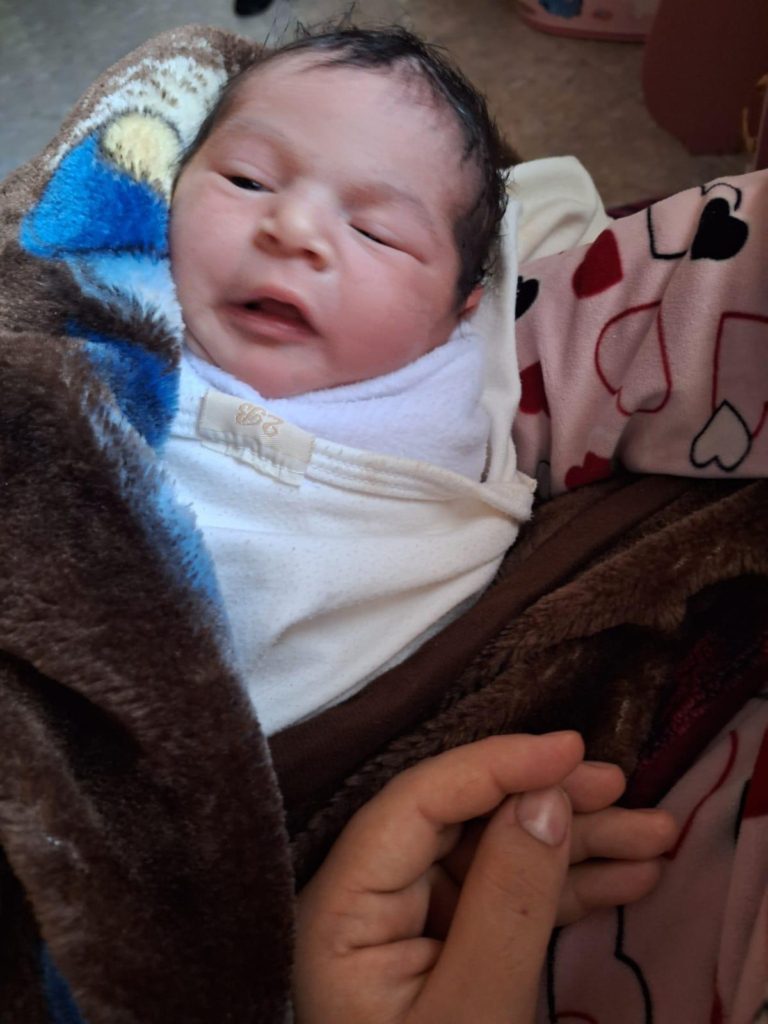
Amnesty International was able to confirm the identity of at least 16 people who were injured, but scores more were likely wounded, according to witnesses, as one of the severely damaged houses sheltered up to 70 people.
All those sleeping on the first floor of the completely destroyed house were killed: Omar Zu’rub, 75, his wife Rowaida, 70, and their son Mahmoud, 36. Mahmoud’s wife, Mervat, 35, was also killed along with all the couple’s four children: Farah, 16; Omar, 14; Mohammed, 13; and Dima, 1.
Omar’s other son Mamdouh, a 39-year-old civil servant, was staying with his family on the top floor. He was killed alongside his daughter Roua, who had recently turned 16.
Malak Al-Shaer, Mamdouh’s wife, told Amnesty International they were all sleeping; she woke up to find herself under debris.
“I couldn’t open my eyes because they were full of glass, shrapnel and sand. My whole body was beneath the rubble, only my foot was visible, maybe it took 20 minutes for the rescuers to get me out,” she said.
Malak suffered severe burns, including on her face, and her vision has been impaired due to shrapnel lodged in her eyes, but she was discharged from hospital after two weeks, as the collapse of Gaza’s healthcare system has left hospitals in the south overwhelmed and desperately underequipped.
In one of the impacted adjacent houses, a two-storey one owned by journalist Adel Zu’rub, more than 70 people were staying from the Al-Lada’a family, who fled Tal Al-Hawa in Gaza city during the second week of the offensive. The strike killed Adel alongside nine members of the Al-Lada’a family.
One survivor, Aref Al-Lada’a, 52, told Amnesty International: “Walls, rocks, cement, glass, started falling on us. The walls and the columns collapsed on us due to the power of the strike.”
Mohamed Zu’rub, whose house was also damaged in the strike, told the organization that the strike hit a residential bloc, full of families. He said: “Sometimes I still cannot figure out if this was real or a nightmare. My nephew has a daughter, who is not yet three weeks, his other son, is not yet two years old… Can you imagine these children’s bodies being crushed under the rubble?”
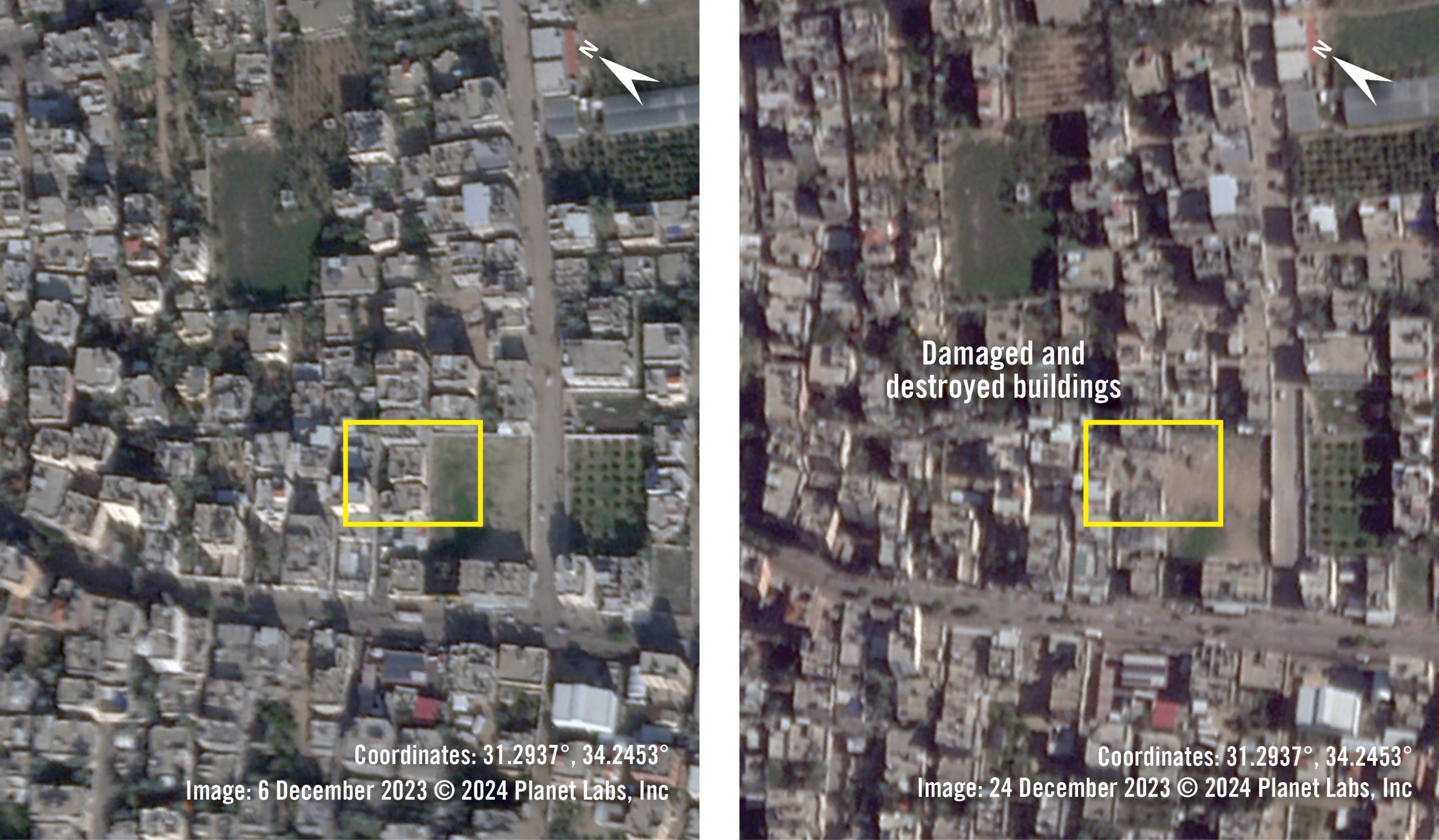
Amnesty International’s research did not find evidence that any of those staying in the house that was directly hit were affiliated with an armed group. The organization’s research also did not find any indication that there were military objectives in or near the houses, raising serious concerns that the strike, which Israel is yet to explain, was a direct attack on civilians and civilian objects and must be investigated as a war crime.
‘They are all civilians’: The Nofal family strike in Tal Al-Sultan
On 9 January 2024, just before 11pm, an Israeli strike hit the two top floors of the Nofal family five-storey building located in Tal Al-Sultan, a neighbourhood to which the Israeli military had repeatedly ordered displaced residents to flee.
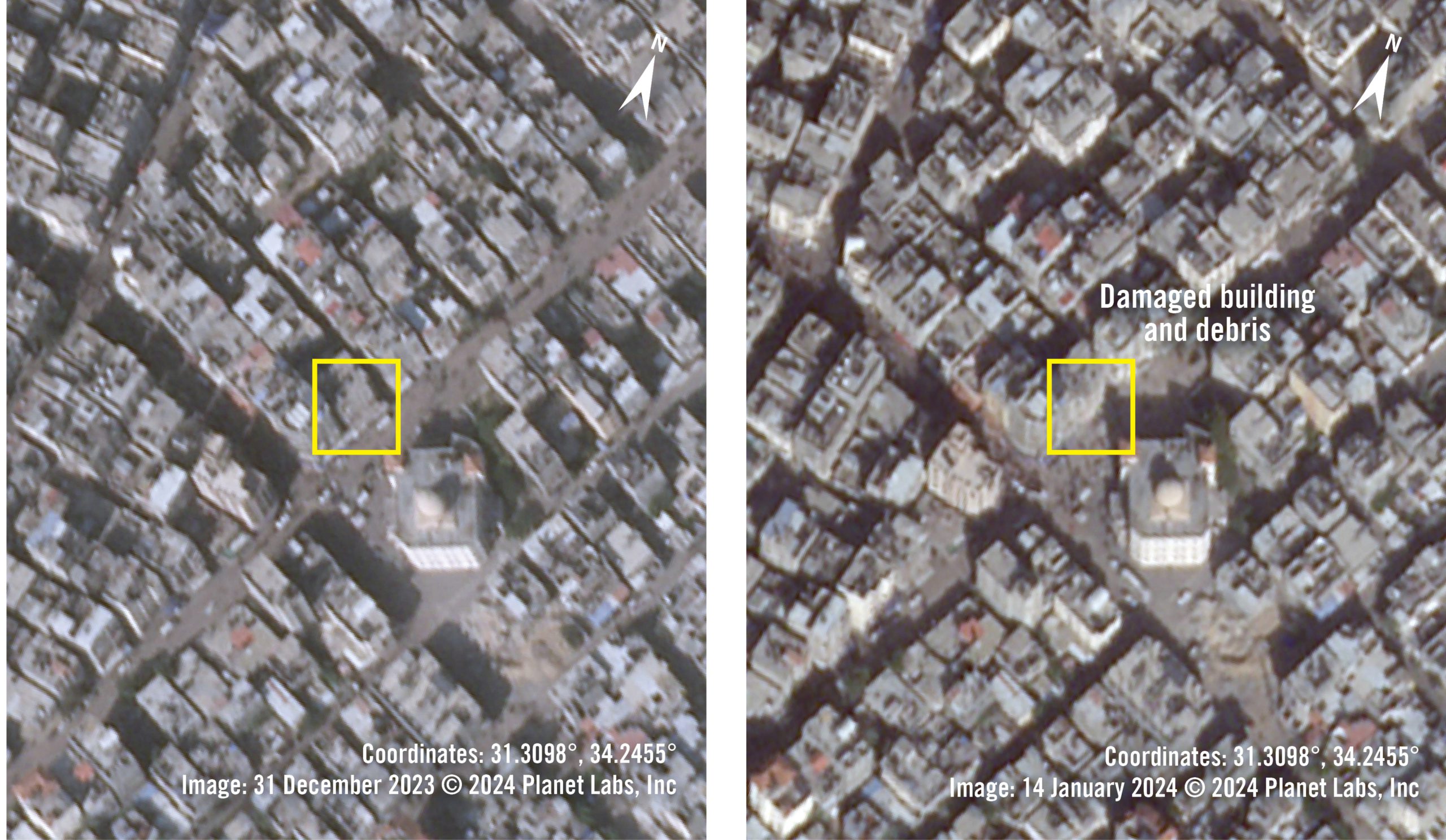
The attack killed 18 civilians, including 10 children, four men, and four women. At least eight others were wounded. Sixteen of those who were killed were on the fourth and fifth floors of the Nofal family homes. The other two – a man and a child – were from the neighbouring Awadallah family, whose zinc-built home collapsed under the debris of the Nofal house.
Nidal Nofal, 47, a nurse who lives on the ground floor, told Amnesty International that relatives from Khan Younis were staying with them following Israeli military instructions to leave for Rafah:
“The map [Israeli forces] sent specifically mentioned Tal Al-Sultan as one of the safe neighborhoods. Minutes before 11pm, my son shouted that he had heard a strike… once I opened the door and looked outside, I saw shards of glass flying all over the place.”
Amnesty International’s weapons experts examined photos of fragments of ordnance recovered from the rubble and identified it as a GBU-39 Small Diameter Bomb, a precision guided weapon with a smaller warhead, explaining the targeted damage to the top floors specifically. It is made in the US by Boeing.
As with the other attacks, Israeli authorities have not given a reason for this strike. Amnesty International’s research, including a review of a list of the names of all those staying on the targeted floors, and those killed and wounded in the attack, did not find any indication that any of those staying in the building were legitimate military targets, rendering it a likely direct attack on civilians and civilian objects, or possibly an indiscriminate attack resulting from failing to take all feasible precautions to avoid killing or injuring civilians, including by ensuring that anyone who was targeted was a fighter, not a civilian.
“Amnesty International’s research provides clear evidence of the gruesome toll of Israel’s relentless and unlawful attacks in Gaza. Four months since Israel’s offensive began, more than 28,000 Palestinians have been killed and over 60,000 injured amid an unprecedented humanitarian catastrophe. In light of the appalling scale of death and destruction, all states have a clear obligation to act to prevent genocide yet instead key states have failed to make a clear call for a ceasefire and are continuing to fuel war crimes by supplying arms to Israel,” said Erika Guevara-Rosas.
“Several victims’ families said the struggle for some measure of justice is all that keeps them going despite their loss, highlighting the importance of tackling longstanding impunity for war crimes and other crimes under international law by Israeli forces. This includes the urgent need for the Office of the Prosecutor of the International Criminal Court to expedite its investigation into evidence of war crimes and other atrocity crimes by all parties.”
Background
In addition to these four attacks, Amnesty International has documented several other instances in which Israeli forces carried out unlawful attacks that killed and injured civilians since 7 October 2023. The relentless bombardment comes amid the siege imposed on Gaza; the deliberate deprivation of access to water and food that has contributed to severe hunger and the rising risk of famine; and the destruction of health and education facilities alongside other critical infrastructure.
Successive waves of mass displacement have turned Rafah into Gaza’s most overcrowded area, where more than a million people, the vast majority of them displaced, live in dire conditions including in makeshift tents and schools. The governorate’s population has risen fivefold from its pre-war population. The implications of an Israeli ground operation are very likely to be cataclysmic for those displaced, who have nowhere to go, and for the entire aid system, which is already stretched to its very limits.
On 7 October 2023, Hamas and other armed groups launched indiscriminate rockets and sent fighters into southern Israel and committed war crimes, such as deliberate mass killings of civilians and hostage taking. According to Israeli authorities, at least 1,139 people were killed and more than 200 people, mostly civilians, including 33 children, were taken as hostages by Hamas and other armed groups in Gaza. As of 1 December, 113 hostages held by Hamas and other armed groups in Gaza had been released and 240 Palestinian detainees and prisoners in Israeli prisons were released as part of an agreement during a ‘humanitarian pause’ that began on 24 November and ended on 1 December.
What else can I do to help?
For more ways to take action and further information on the current crisis and Amnesty’s work on Israel and the Occupied Palestinian Territories, check out the action toolkit on our country page.
Top image: Relatives of the Palestinians died in Israeli attacks, mourn as they receive the dead bodies from the morgue of Nasser Hospital for burial in Rafah, Gaza on December 19, 2023. The journalist Adel Zorob was among the people killed in Rafah city. Photo by Abed Rahim Khatib/Anadolu via Getty Images.






















